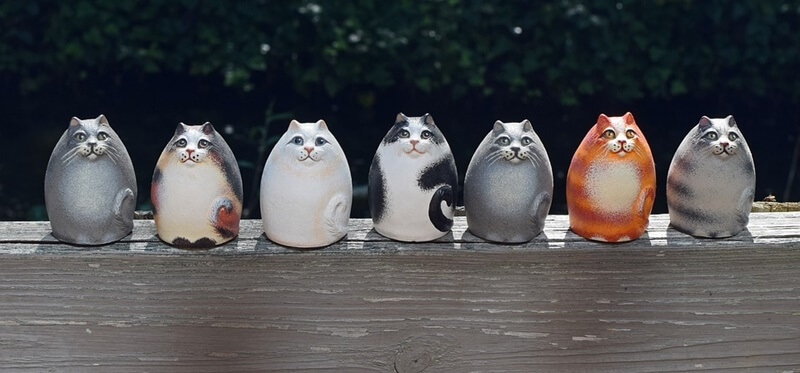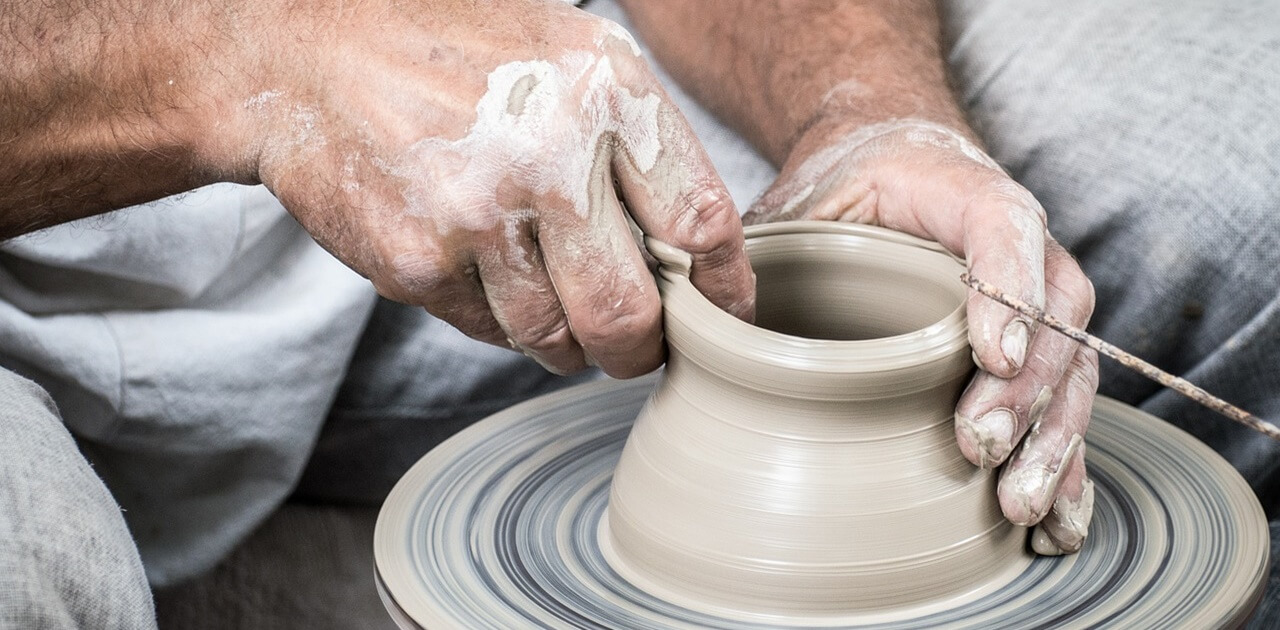21ST CENTURY CERAMIC ART
A ceramic is something made of clay and permanently hardened by heat. It is also known as pottery, which has been around since before the Neolithic period, with ceramic objects discovered that date back 50,000 years. Ceramics include earthenware, stoneware and porcelain and evidence of its use in past centuries has been found in the Czech Republic, China, Japan and Russia.
When a ceramic is made into the required shape, it is dried and then heated in a kiln to remove all the water from the clay, whilst at the same time, creating permanent changes to increase the strength and hardiness of the new shape that has been set. A clay body can be decorated before or after firing. It was as recently as the latter half of the 20th century that ceramics was chosen by a few artists as a fine art expression, taking it beyond craft.

The state of contemporary ceramics
Ceramics in the 21st century is going through a time of energy and chaos, where the rules have been put aside and the boundaries are fluid. Generally ceramic art was created to create doubt and move forward, while ceramic craft looked to improve culture by returning to the past for reassurance. Now these fields work together and frequently crossover. Today, artists generally no longer feel the need to reference the history of the material. Few artists even offer a distinction between ceramic art and ceramic craft, unless they want to define their territory.
Much of the celebrated ceramic art created in the 21st century is made by artists who have not been trained in the field. These artists may be making sculptures or pots, or pots as sculpture. There are also many people reverting to hand-crafted ceramics, with a market for ceramics that has become open to all ideas, including the most strange.
Collaborations
Socially relevant themes are becoming much more common in art. With ceramics having its own deep cultural history to draw on, it is a powerful material to use. This means that ceramics are now more experimental, interdisciplinary and performative than before. Ceramicists are letting go of the traditions and collaborating with painters, sculptors, architects, designers, geologists and others and together the field is pushing all previous boundaries in a new direction. This is often done irreverently and boldly and taking cues from everything around them.
Exhibitions and events
Ceramics have also become a more legitimate art medium and more museums are displaying their collections of ceramics for the public to enjoy. The American Museum of Ceramic Art in Pomona, California opened in 2005 and is dedicated to the exhibition, preservation and creation of ceramic art.
Ceramic Art London takes place each March at Central St Martins at Kings Cross, London. East Gallery has plans of partnering at some stage with them.
CCACA 2018 (California Conference for the Advancement of Ceramic Art) brings the ultimate ceramic sculpture event with demonstrations, lectures and shows. The 2018 event features En Iwamura, Gerit Grimm, Shenny Cruces, Kevin Snipes and Michelle Gregor.
KERAMIKA Now in its seventh year, is the dedicated marketplace for the ASEAN ceramics industry. Taking place in Indonesia, the largest ceramic producing country in ASEAN, the Indonesia Ceramic Industry Association (ASAKI) will showcase top Indonesia ceramic manufacturers plus international ceramic manufacturers and suppliers of raw materials, equipment, and machineries. As part of the exhibition will be a world class conference that will be hosted by ASAKI and ACIMAC (Italian Association of Ceramic Machinery and Equipment).
Noted ceramic artists in the 21st century
Many artists continue to preserve the traditions of the ceramic craft, yet others have been more experimental and unconventional with the aesthetics. Some of these avant-garde contemporary ceramic artists create works that mimic dissimilar materials or draw attention to important causes whilst demonstrating the versatility and diversity of ceramics. Here are some notable names:
- Christopher David White creates surreal ceramic sculptures that look they are made from wood. His work seeks to explore the relationship between nature, man and impermanence. This includes the beauty that can come from decay, which forces the viewer to question the world around them.
- Ceramicist Charlotte Mary Pack uses her beautiful wheel-thrown works to encourage others to find out more about endangered species. Each pastel-coloured vessel is topped with a handcrafted model of a threatened animal and features a description of the creature underneath.
- Brett Kern’s ceramic Pop Art sculptures are inspired by inflatable toys and come complete with shiny surfaces, seams, and meticulously crafted creases that fossilise his memories of the toys from his childhood.
- Livia Marin is an avant-garde ceramic artist who has taken traditionally-painted teapots, cups and bowls in plaid or paisley prints and changed their form so they appear to melt into patterned puddles, prompting the viewer to reflect upon the familiar and predictable in everyday life.

